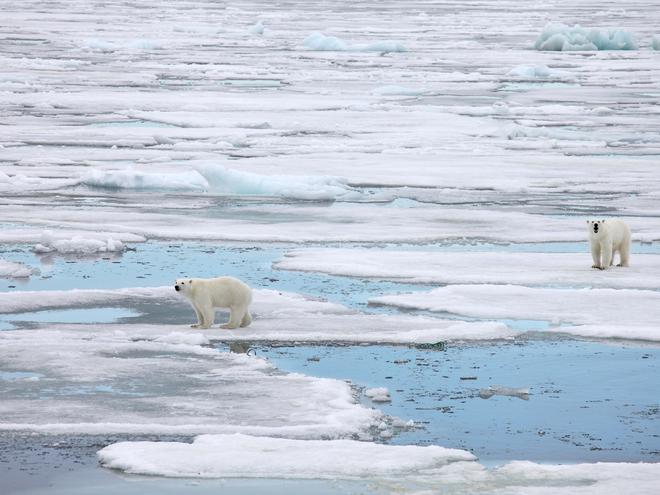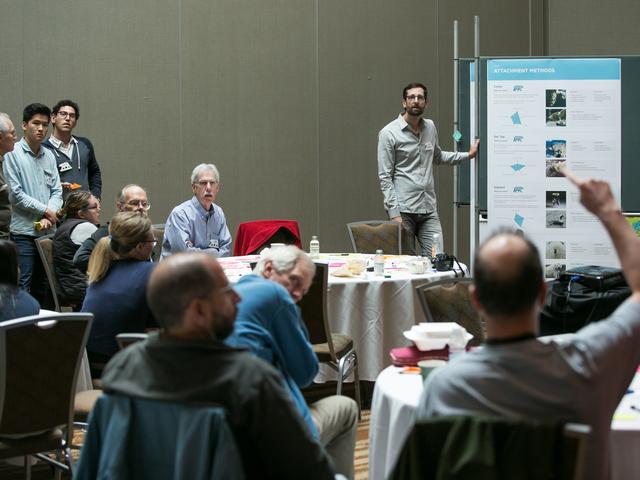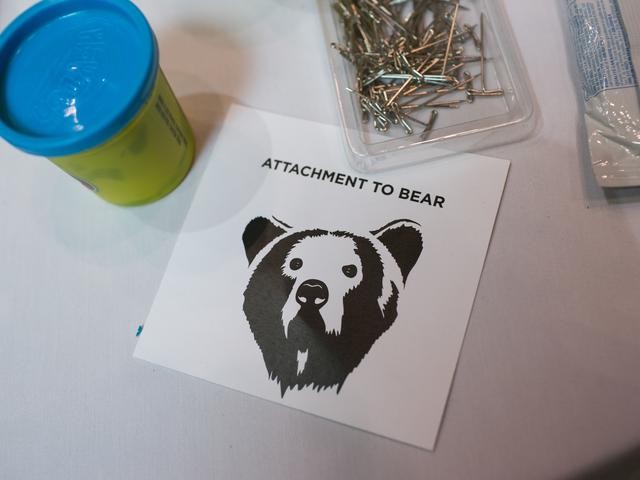
In a room in a convention center in Anchorage, several people—including top polar bear researchers, engineers, and Alaskan native people—are clustered around tables playing with modelling clay, pipe cleaners and other bits and pieces. Or that is what it looks like. What they are in fact doing is taking the first steps toward building better devices for tracking and studying polar bears.
Right now, researchers rely on polar bear collars to collect important information about the movements of bears—and about their lives in general. But the collars are not always reliable given the beating they get in the wild. In mostly freezing temperatures, polar bears regularly move in and out of salt water, roll around, fight, and rub up against ice.
That’s why WWF has teamed up with global design company IDEO to brainstorm an innovative solution for more effectively gathering information about these fascinating Arctic mammals.
“Technology has moved on hugely since the 1980s,” said Elisabeth Kruger, a WWF program officer who helped organize the workshop. “We now have computers in our pockets, but we are still using a lot of the same telemetry technology we had in the 1980s. Science for tracking bears has not kept pace, partly because it’s such a small market, so this WWF initiative can be useful to help propel the technology forward.”
Effectively tracking polar bears is vital to ensuring the survival of the species. Climate change poses a serious threat to these animals that rely on sea ice as a platform from which to hunt seals, rest, and breed. But for more than 20 years, summer sea ice has been decreasing in size and melting for longer periods of time. By monitoring polar bears, WWF and our partners can better understand the impact of climate change and how expansion of industry in the Arctic might affect various polar bear populations.
 © Nathaniel Wilder / WWF-US
© Nathaniel Wilder / WWF-US © Nathaniel Wilder / WWF-US
© Nathaniel Wilder / WWF-USApart from the reliability questions, there are also questions of how much more information could be packed into monitoring devices, and how to get that information from bears of both sexes. At the moment, only females are tracked because the collars would fall off male bears that have larger necks in proportion to their head size. Those at the workshop also talked through the tradeoffs that must be made to find a successful alternative to collars.
For example, smaller batteries mean less power, and larger batteries can be cumbersome. We need to find a middle ground. By the end of the day, the group had a clear grasp of these concerns and laid out potential solutions.
“There are some promising ideas to work with, such as trying to pack the electronics into ear tags. These are worth investigating further,” said Joerg Student, one of several engineers from IDEO who volunteered to help out with the design questions.
Andrew Derocher, a bear biologist at the University of Alberta agrees. “If we can find the funding, and keep people talking, we can improve bear monitoring. With the rapid changes that are happening to polar bear habitat, it is critical that we have the best possible information to work with.”
Enviroshop is maintained by dedicated NetSys Interactive Inc. owners & employees who generously contribute their time to maintenance & editing, web design, custom programming, & website hosting for Enviroshop.
